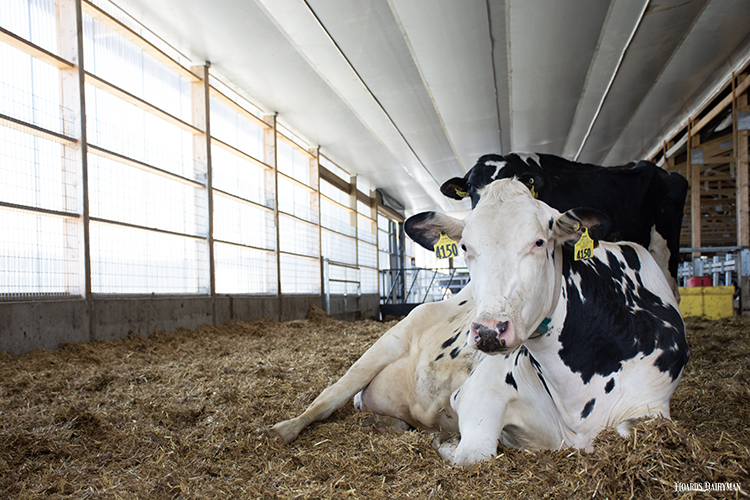
Many farms have protocols written to help keep cows healthy. It is also important to have a plan in place for when cows become sick or injured and are non-ambulatory.
In a Penn State Extension article, dairy extension educator Daniela Roland shared that down cows require immediate attention for the best chance at recovery. If cows are unable to stand for an extended period, permanent muscle damage is likely to occur. Cows that remain recumbent for more than 24 hours are prone to secondary tissue damage, Roland wrote.
In accordance with the Farmers Assuring Responsible Management (FARM) Animal Care Program, a protocol written for non-ambulatory dairy cattle should include the following:
- Non-ambulatory animals are moved using proper methods, including the use of special equipment.
- Non-ambulatory animals are provided with prompt medical care.
- Non-ambulatory animals are provided with access to feed, water, protection from the elements for typical climatic conditions, isolation from other ambulatory animals, and protection from predators.
- Facilities are designed to have a location to segregate injured, sick, or weak animals.
- The location for weak, sick, or injured animals provides animals with feed, water, protection from heat and cold for typical climatic conditions, isolation from other ambulatory animals, and protection from predators.
- The written herd health plan has a written protocol for non-ambulatory animal management that includes language specific to areas of non-ambulatory animal management.
Down cows should be kept separate from other animals in a safe place with shelter from the elements. Provide dry bedding, ideally 6 inches deep, Roland recommended. She noted that sand is best, but sawdust or straw can also be utilized. Avoid hard surfaces as they do not offer enough grip or good footing if the animal attempts to stand.
Roland advised rolling the animal onto its chest until it is sitting in a sternal position. Bales of hay or straw could be propped against the animal to provide stability. She also noted that fresh feed and water should be made available and placed in tubs with low sides so they are easily accessible.
She recommended consulting with a veterinarian to determine why an animal cannot stand, if additional treatment is needed, or if an animal should be culled. A veterinarian could also help prepare down cow protocols so the farm is ready if this unfortunate situation arises.








